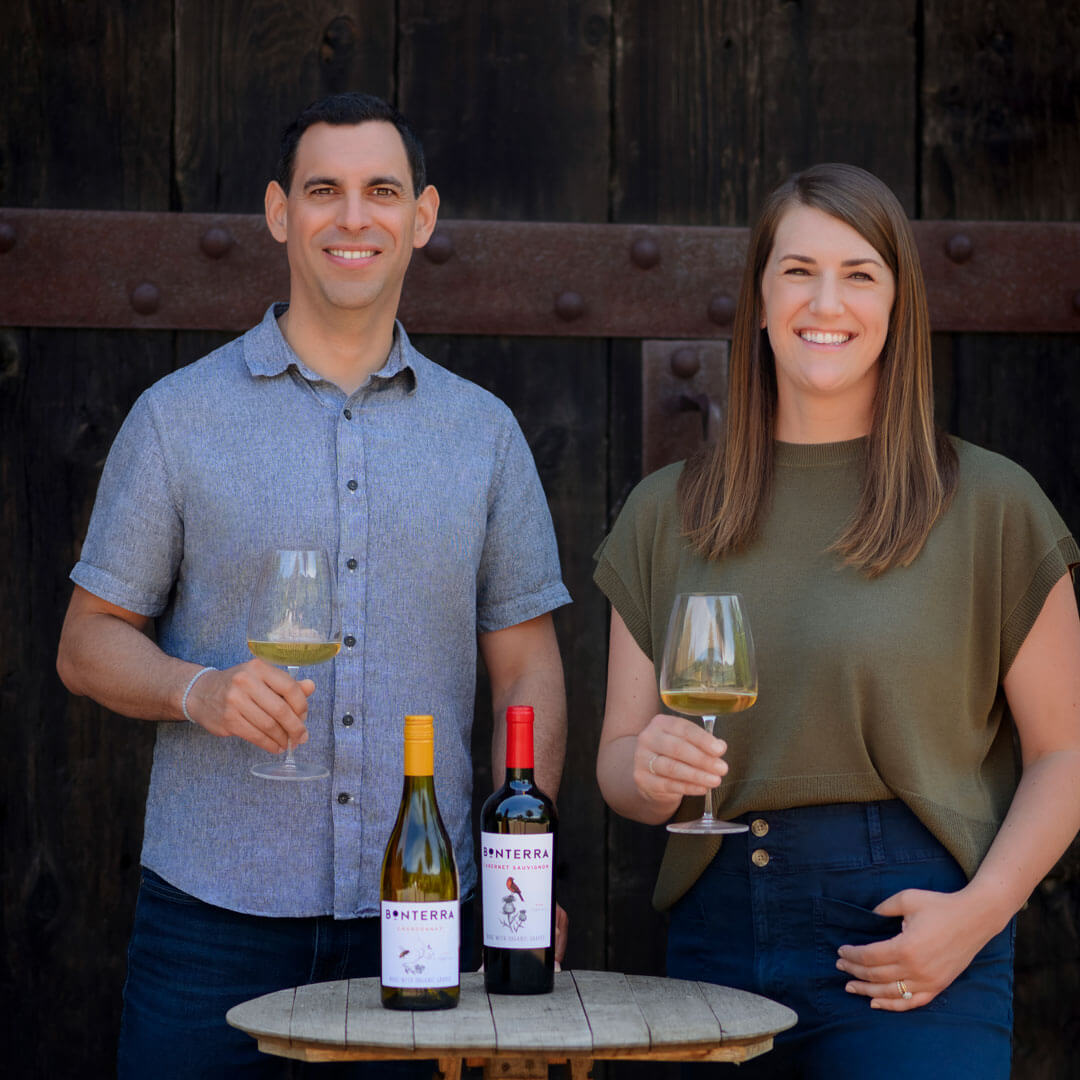A lot of what we describe about food and wine has to do with aromas and flavors, but there are a few exceptions – and tannin is one of them. Wine tannins have a significant influence on our experience of wine because of their impact on texture, ageability, and flavor. Understanding what these compounds are and how they affect our experience of wine adds a lot to our appreciation, and helps us more consistently find wines that align with our personal preferences.
What Are Tannins in Wine?
Tannins are naturally occurring compounds found in the skins, seeds, and stems of grapes (as well as other fruits, like plums and persimmons), and in the oak used to make wine barrels. Pure grape juice itself contains no tannins, but when it spends time in contact with oak or grape skins – a key step in red winemaking – the juice draws out some of the grape tannin and color. We usually separate the juice from the skins and seeds of white grapes right away, so no tannins are imparted by the grapes themselves. White wines aged in new oak, however, can have significant tannins.
The amount that transfers to the juice depends on temperature and time, in the same way that very hot water draws out the astringency and color of tea more quickly than cold water does. It also depends on how tannic the source is: some varieties of grapes have much more tannin than others, and tannin levels in new oak barrels are significantly higher than in barrels that have been used a few times.
The Role of Tannins in Wine
How does the presence of wine tannins affect us? The most immediate way is through texture. We often experience tannin as a drying and sometimes puckery sensation, although they can sometimes feel velvety or suede-like. This tactile experience adds an interesting third dimension to the aroma and flavor of a wine, which we say gives the wine structure.
A wine’s tannin structure plays a crucial role in the aging process. Like the structural supports of a building, tannins help to preserve the wine’s integrity over time — allowing the wine’s flavors and aromas to evolve in a pleasant way for years, and sometimes decades. Wines with higher tannin levels tend to age more gracefully (and for longer) than wines without tannins, making their window for enjoyment much longer. As tannins age they also soften, melting into the wine to create silky new textures.
Does tannin also have a taste? Many people experience it as a slight bitterness or astringency, which builds complexity on our tongues when balanced with the sweetness of fruit and the refreshing tartness of acidity. We’ve also found that different tannins have different tastes, depending on their source. Tannins from grape stems, for example, taste rather different from oak barrel tannins. This variety of flavors available lets winemakers influence both texture and taste.
Types of Wines with Higher Tannin Level
As a general rule, the wines with the most tannins are red wines. Red wines are made by letting the juice sit with the grape skins and seeds during fermentation, and then (usually) aging the wine in oak barrels before bottling, so grape tannins have plenty of opportunities to make their way into the wine. Some red grapes, particularly Cabernet Sauvignon, Syrah, and Nebbiolo, are also just naturally more tannic than other varieties; Pinot Noir and Gamay are reds at the lighter end of the tannin spectrum. If we made two wines in exactly the same way, using Cabernet Sauvignon for one and Pinot Noir for the other, the Cabernet would naturally have much more powerful tannins.
Certain decisions in the wine making process can also incorporate higher tannin levels into wine. Fermenting or aging wine in newer oak barrels can bring significant structure to both red and white wines, building more body and contributing to a richer mouthfeel. White and red wines that are intended to be consumed several years after harvest are almost always aged in oak for some period of time, to impart the tannins needed for graceful evolution. Bonterra’s Single Vineyard ‘The Roost’ Chardonnay is a great example of this.
How to Enjoy Tannic Wines
While we know some wine lovers enjoy tannic wines anytime, any place, we also know not everyone is like that! Here are our favorite ways to maximize enjoyment of wines with big tannins.
Decanting or Aging: The drying sensation of tannins softens with time and exposure to air. Wines that might taste quite tannic immediately after being bottled will taste softer after a few years of aging — or after an hour or two in a decanter. Exposing a wine to oxygen helps achieve a similar effect to aging, transforming the texture of the tannins into smoother sensations.
Pairing with Food: Powerful tannins shine at their best when paired with rich, savory dishes. The classic pairing of red Bordeaux and a well-marbled rib steak is definitely classic for a reason. But fortunately, red meat is not the only option; we think Cabernet Sauvignon can be just as delicious paired with rich, well-seasoned vegetarian dishes. The essential is having plenty of fat and plenty of salt to latch onto the tannins and help neutralize their astringency. (We recommend avoiding seafood and spicy food with tannic wines, though; for most people, the combination of those flavors is not nearly as enjoyable.)
Tasting Tips: Tannins are an essential part of wine, so learning to focus on them while you’re wine tasting can help boost your appreciation. As you hold the wine in your mouth, pay attention to the interplay and balance between the tannins, acidity, and fruit. We like to take a small taste as soon as we open a bottle, and then taste the wine again after an hour of decanting to see what happens. The difference is really amazing!
Learning firsthand how tannins impact our wine tasting experience is such an important step in our personal wine journeys. Tannins’ unique texture, flavor and influence on ageability have an incredible impact on our experience, and for a lot of people, knowing our preferences around tannin can make choosing a bottle so much more rewarding.
Explore Bold Flavors with Bonterra
Understanding the role of tannins can greatly enhance your wine experience, from appreciating texture to choosing wines that age gracefully. As an organic winery, Bonterra takes pride in crafting wines that cater to every taste, whether you enjoy bold tannins or prefer something smoother.
Explore and buy wine online directly from our website, or join our wine club to discover new favorites. Why not start your exploration today with Bonterra’s selection of award-winning wines? From silky Pinot Noir to Zinfandel and Merlot and bold barrel-aged reds, we have a bundle with a selection of varying tannin levels to help you discover your own personal preferences. With a variety of options, Bonterra wine is perfect for your next tasting adventure! Cheers!




